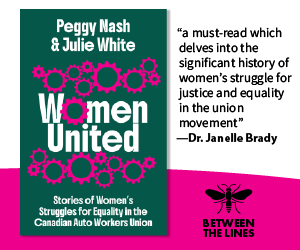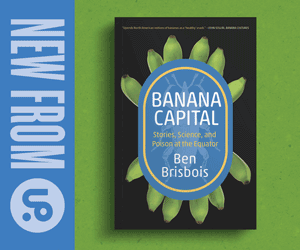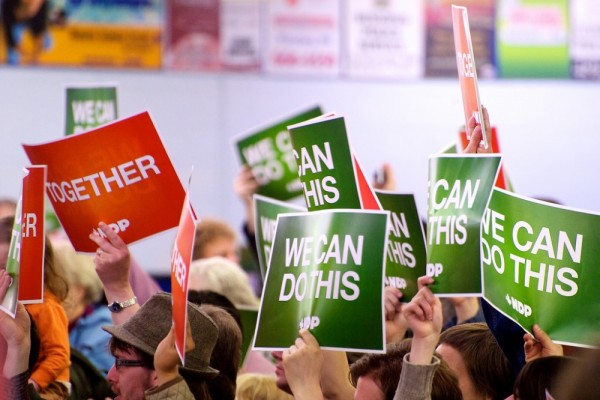David Camfield’s ‘We Can Do Better’
Around the world, people are increasingly looking beyond mainstream politics to combat right-wing populism, growing wealth inequality, and potentially catastrophic climate change. Young people especially have flocked in droves to support self-proclaimed democratic socialists like Bernie Sanders in the U.S., and Jeremy Corbyn in the U.K. In Canada, the left-wing surge has been more muted, but it is still evident in grassroots campaigns such as the Fight for $15 and Fairness. David Camfield’s We Can Do Better is a concise introduction to social theory that attempts to address this zeitgeist in general, and the newcomers to anti-capitalist politics in particular. Throughout, Camfield presents a case for what he calls “reconstructed” historical materialism. This is essentially a Marxist theoretical orientation incorporating aspects of feminist, anti-racist, and queer theory perspectives — an approach, argues Camfield, that can reveal to us both how we got into this mess and how we can get out.
Camfield begins by debunking various idealist social theories, including the “power of positive thinking” self-help gurus and those who see conflicts between different societies as the manifestation of differing inherent cultural “values” à la Samuel Huntington’s “clash of civilizations” thesis. Camfield then sets his targets on seemingly materialist theories claiming to uncover natural causes for inequality and oppression. These include evolutionary psychology’s form of biological determinism and the more ubiquitous neoliberal economic theories; both perspectives contend that capitalist economies and the hierarchies that they produce simply reflect a fixed, unchanging human nature and that socio-economic systems that attempt to address these inequalities are doomed to fail due to this so-called “fact.”
Camfield’s work here is valuable to activists who are sure to encounter supporters of these beliefs in their organizing work and day-to-day lives, giving them straightforward and logical refutations of these worldviews.
In the second section, Camfield presents his alternative: reconstructed historical materialism. Drawing on direct passages from Marx and Engels, and influenced by more recent thinkers such as Jeff Noonan and David McNally, Camfield argues for a social theory that centres class conflict and changes in the modes of production and reproduction as the drivers of historical change. At the same time, Camfield is quick to remind readers that, “class and production never exist apart from other social relations” such as gender, sexuality, and race. Camfield also presents a brief history and analysis of capitalism as a distinct mode of production. This allows Camfield to demystify many ostensibly natural aspects of our society, demonstrating how capitalism, its corresponding social structures, and the values that they produce are not “default” conditions of humanity, as the proponents of market-centred social theories argue, but are in fact quite recent phenomena that were imposed on people forcibly through various forms of coercion and discipline.
Building on these themes, each chapter in the subsequent section asks a separate question relating to contemporary social issues, such as: “Why is so little being done about climate change?”, “Why do women still face sexism?”, and “Why does racism still persist?” Camfield attempts to answer each question using the historical materialist method outlined in the previous section, and demonstrates how each problem is interrelated and bound up with capitalist social relations more generally.
The book concludes by outlining a case for how to move forward. Here, Camfield criticizes the limitations of common strategies such as election-focused reformism, localism, and various co-op projects. He suggests instead that activists ought to get involved in social struggles, and “community organizing, union activity, and campus-based student groups,” specifically. These are, of course, entirely fine suggestions — but it is likely that the type of person reading this book will already be involved in such activities (even if for the first time) and it is doubtful that involvement in these activities will ever move beyond reformist practices without a broader, more concerted strategy. Camfield, of course, recognizes that these actions are not enough, suggesting somewhat nebulously that participation in these activities ought to be part of a strategy that can “build social movements.” Unfortunately, he largely omits discussion of organizational forms that might transcend workers’ sectional interests and push toward unifying working-class struggles as a whole.
Sean Antaya is a PhD student in Political Science at York University. His master’s thesis examined the New Left and rank-and-file organizing during the 1970s in Windsor, Ontario.
This article appeared in the Fall 2018 issue of Canadian Dimension (An Unjust Justice System).










